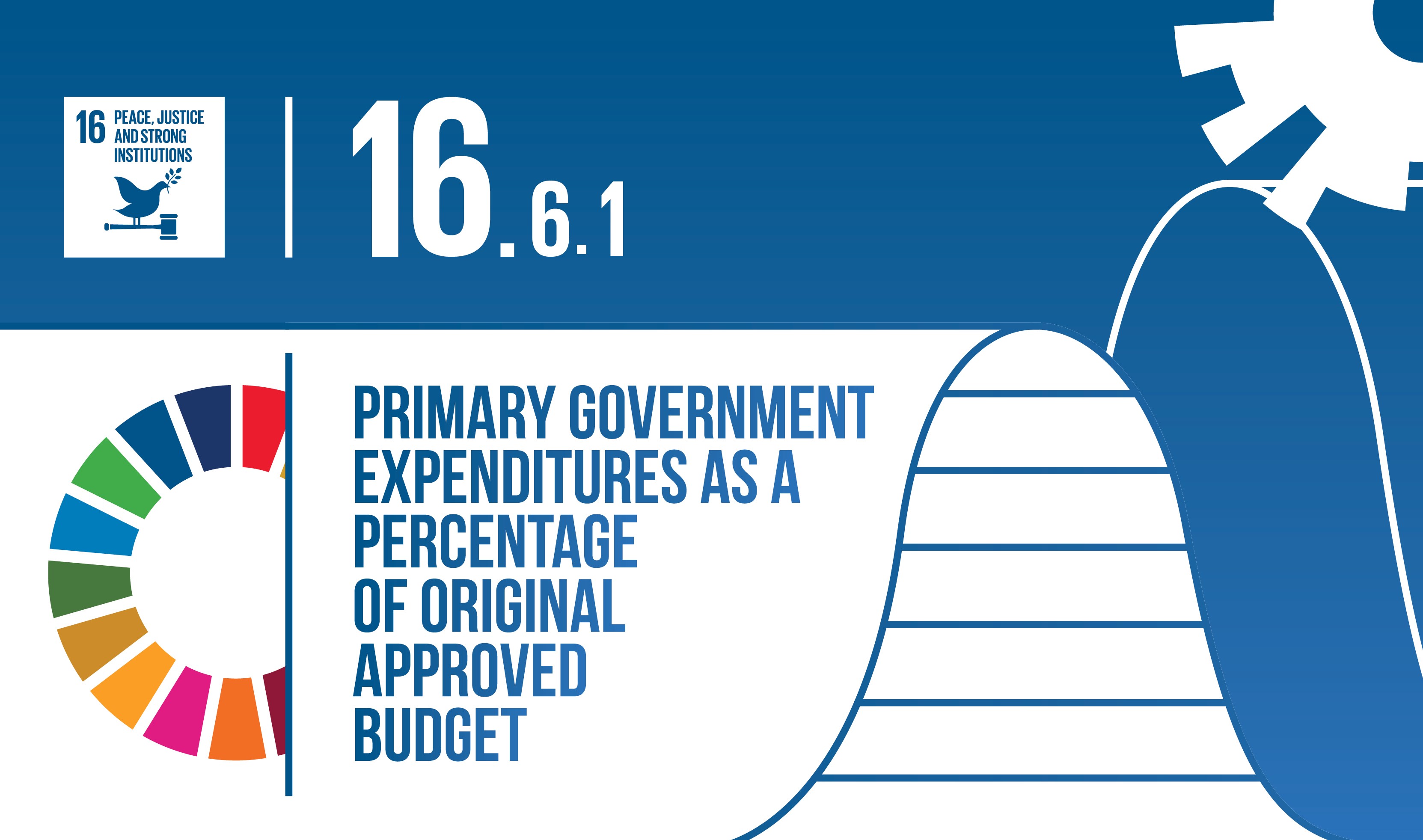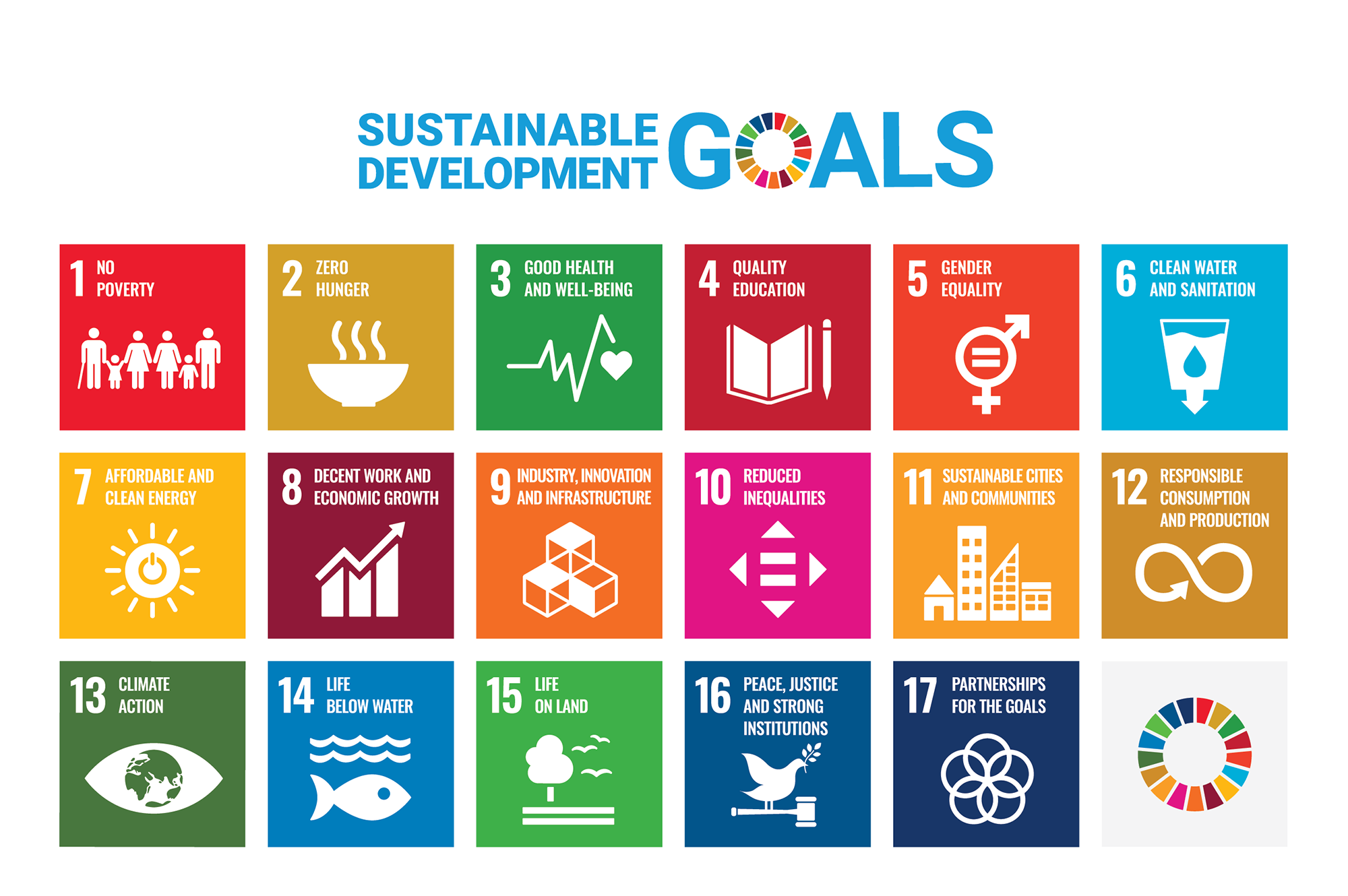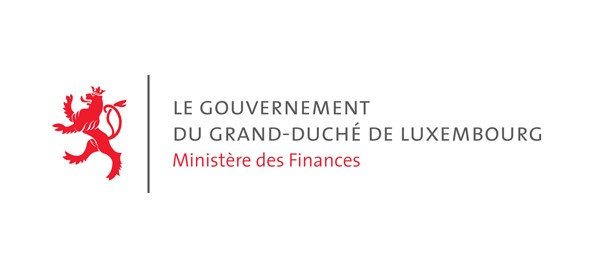The PEFA Secretariat is supporting the UN SDG Initiative through the project: “Enhanced PEFA data collection of the UN Sustainable Development Goal Indicator 16.6.1 on budget credibility”. SDG Indicator 16.6.1. “Primary government expenditures as a percentage of original approved budget” is a part of the Target 16: "Peace, Justice and Strong Institutions". PEFA is in charge of data collection and reporting to the United Nations Department of Economic and Social Affairs through the World Bank Data Department.
THE UNITED NATIONS SDG AGENDA
The World leaders came together in 2015 and made a historic promise to secure the rights and well-being of everyone on a healthy, thriving planet when they adopted the 2030 Agenda for Sustainable Development and its 17 Sustainable Development Goals (SDGs). The Agenda remains the world’s roadmap for ending poverty, protecting the planet and tackling inequalities. Read more on the UN Webpage.
The SDGs are a call for action by all countries – poor, rich and middle-income – to promote prosperity while protecting the planet. They recognize that ending poverty must go hand-in-hand with strategies that build economic growth and address a range of social needs. Read more about the 17 Goals to transform the World.
They are all interconnected and address the global challenges, including those related to poverty, inequality, climate change, environmental degradation, peace and justice. Check the Goals and How to take action.
THE WBG WORLD DEVELOPMENT INDICATORS
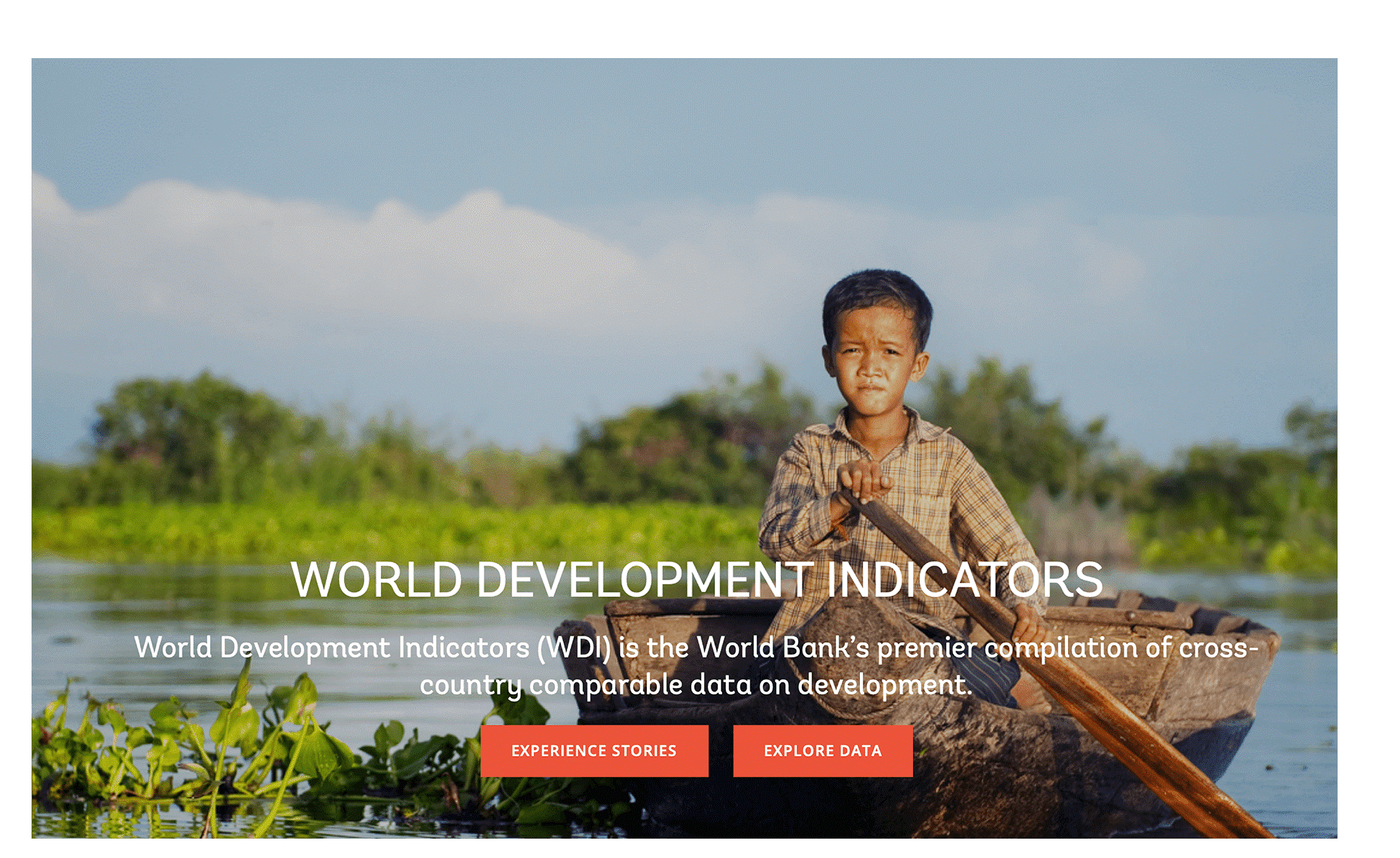
The World Bank Data Department oversees the World Development Indicators, a compilation of relevant, high-quality, and internationally comparable statistics about global development and the fight against poverty.
The Unit produces the SDG Atlas of Sustainable Development Goals, that presents interactive storytelling and data visualizations about the 17 Sustainable Development Goals. The latest SDG Atlas 2023 highlights trends for selected targets within each goal and introduces concepts about how some SDGs are measured. The Atlas draws from the World Bank's World Development Indicators database, as well as from a wide variety of relevant data sources, including international organizations, scientists, and other researchers worldwide. The
The World Development Indicators stories related to the SDGs are presented for all readers interested in understanding the global progress and the key issues facing the world.
PEFA AS PART OF THE SDG INITIATIVE
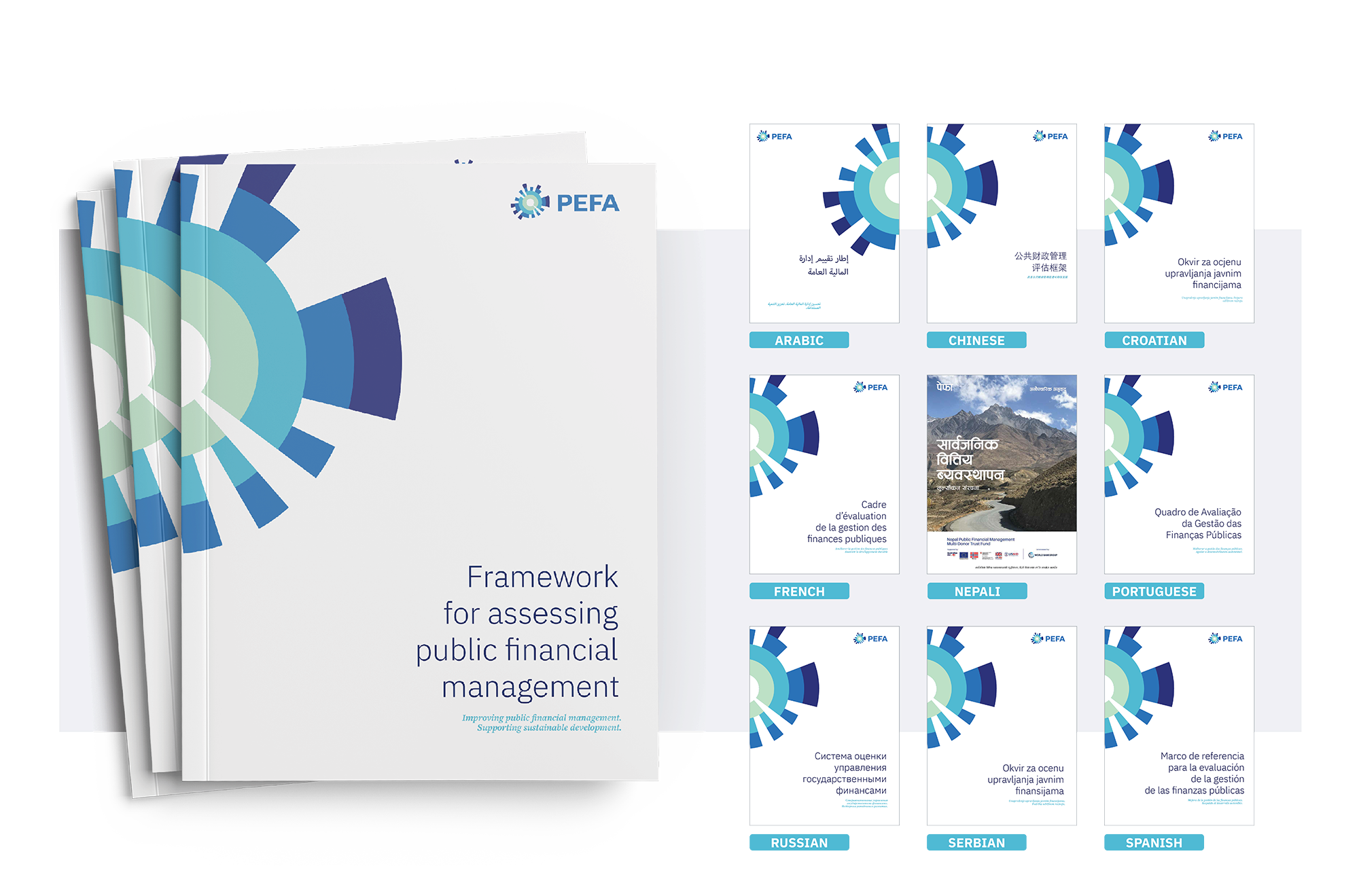
Since 2018 the PEFA Secretariat has been in charge of the data collection for SDG Indicator 16.6.1 on budget credibility, in cooperation with the World Bank Data Unit and supported by the PEFA Partners.
The information for measuring SDG indicator 16.6.1 is similar to Performance Indicator PI-1 in the PEFA Framework, which provides a system for assessing the status of Public Financial Management (PFM) in a country and for reporting on its capabilities and performance against international good practices. The data used for this indicator is obtained from PEFA reports supplemented by information from World Bank and other PEFA partners.
The data on SDG 16.6.1 is reviewed and updated annually to ensure the quality, consistency and currency of information. As at the beginning of 2024, data for 173 countries on average for 12 years has been collected and the indicator has been upgraded to Tier 1. The full set of data can be accessed on the WB Data Portal and on the UN website: SDG Indicators Database.
SDG 16.6.1 GLOBAL TRENDS
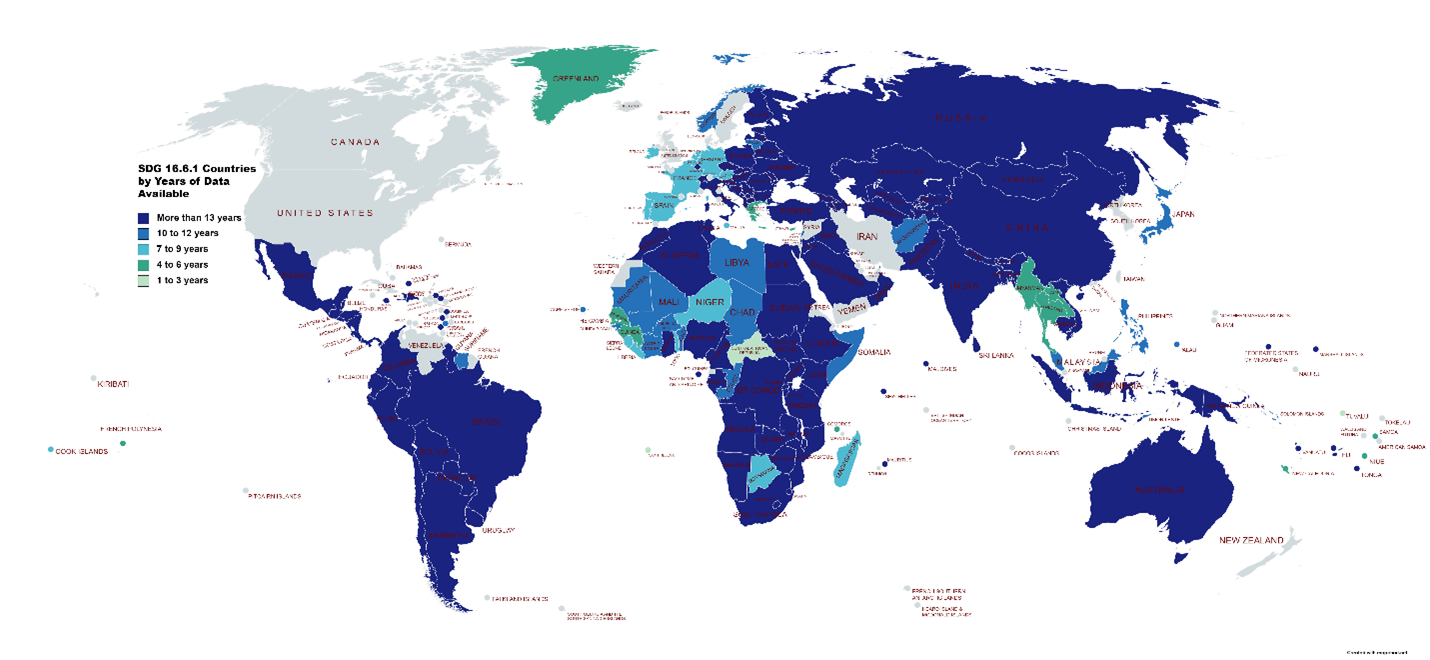
Map of SDG 16.6.1 Data Global Coverage as of June 2024
Indicator 16.6.1 has been classified in Tier 1 by the United Nations since 2022. This confirms that it an internationally established methodology and standards with data collected regularly for at least 50 per cent of countries in every region where the indicator is relevant.
The national budget is the key policy tool used by governments to implement strategies, policies, and programs. SDG indicator 16.6.1 identifies the difference between the legislated annual budget and actual expenditure for the same year. It provides a guide to the dependability and efficiency of government budget execution. International good practice is achieved when actual expenditure deviates within 5% of the approved budget. Deviations exceeding 15% indicate low reliability of approved budgets as a predictor of expenditure results.
Although globally most countries are performing well, the distribution of the size of deviation between executed and planned budget expenditures has increased within and across countries in recent years (2015-2022), as shown in Figure 1.
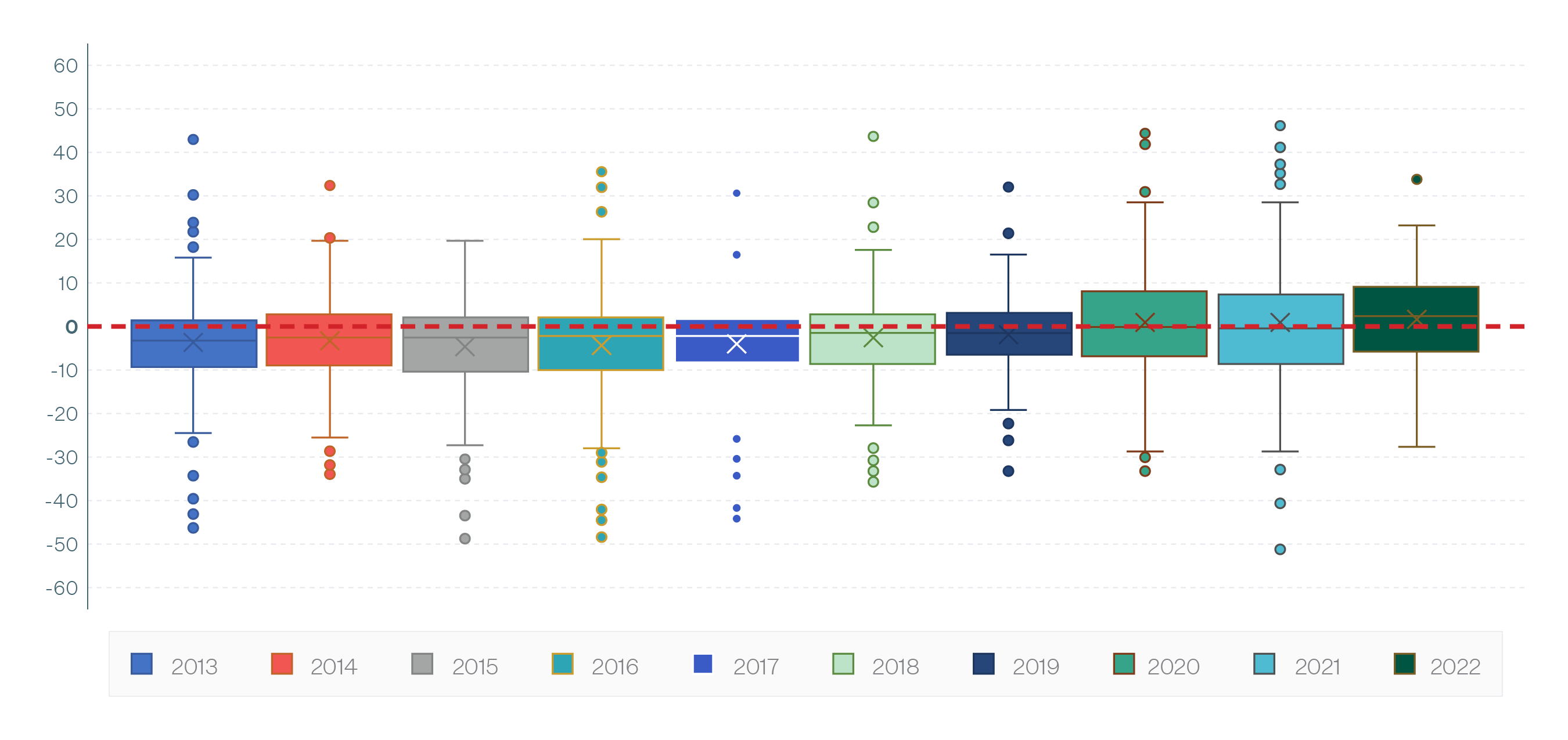
Figure 1. Distribution of average % deviations between planned and executed budget expenditures across all countries.
Governments across the world have found it difficult to return to pre-COVID-19 levels of budget reliability, in part due to new international challenges impacting economies, including global political instability, inflation and volatile resource prices. Attempts to support economic activity and address social stresses have resulted in higher budget expenditure than originally approved across all regions.
Access to SDG 16.6.1 Indicator Databases: WB DATA PORTAL and UN SDG INDICATORS DATA PORTAL
What do the SDG 16.6.1 data tell us about budget execution over the period 2008 - 2023?

Budget deviation globally
Only a few countries were able to withstand the shock of COVID-19 on aggregate annual budgets. Most countries found it necessary to finance substantial emergency spending and additional investments to address the impact of the pandemic. This impacted on the direction of the average deviation between actual and planned budgets, that changed from underspending to exceeding the original approved budget, as presented below in percentages.
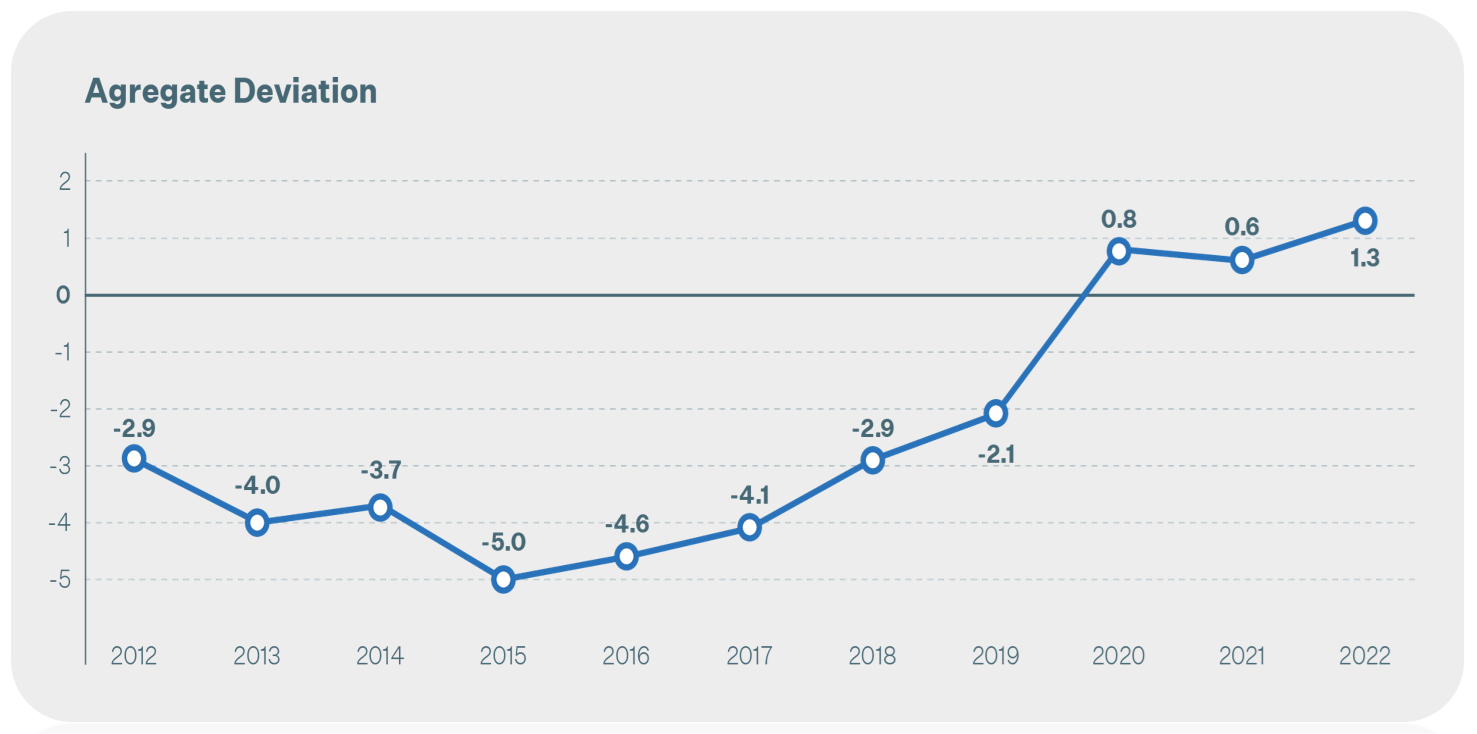

Trends according income levels
Success in achieving low deviation between approved and executed expenditure varies considerably across countries with different income levels and regions. Analyzing the average percentage deviations by country income levels it is apparent that in high income countries, budgets were over-executed and the deviations were higher, while in lower-income countries they were under-executed. The responses to COVID-19 resulted in higher deviations across all groups.
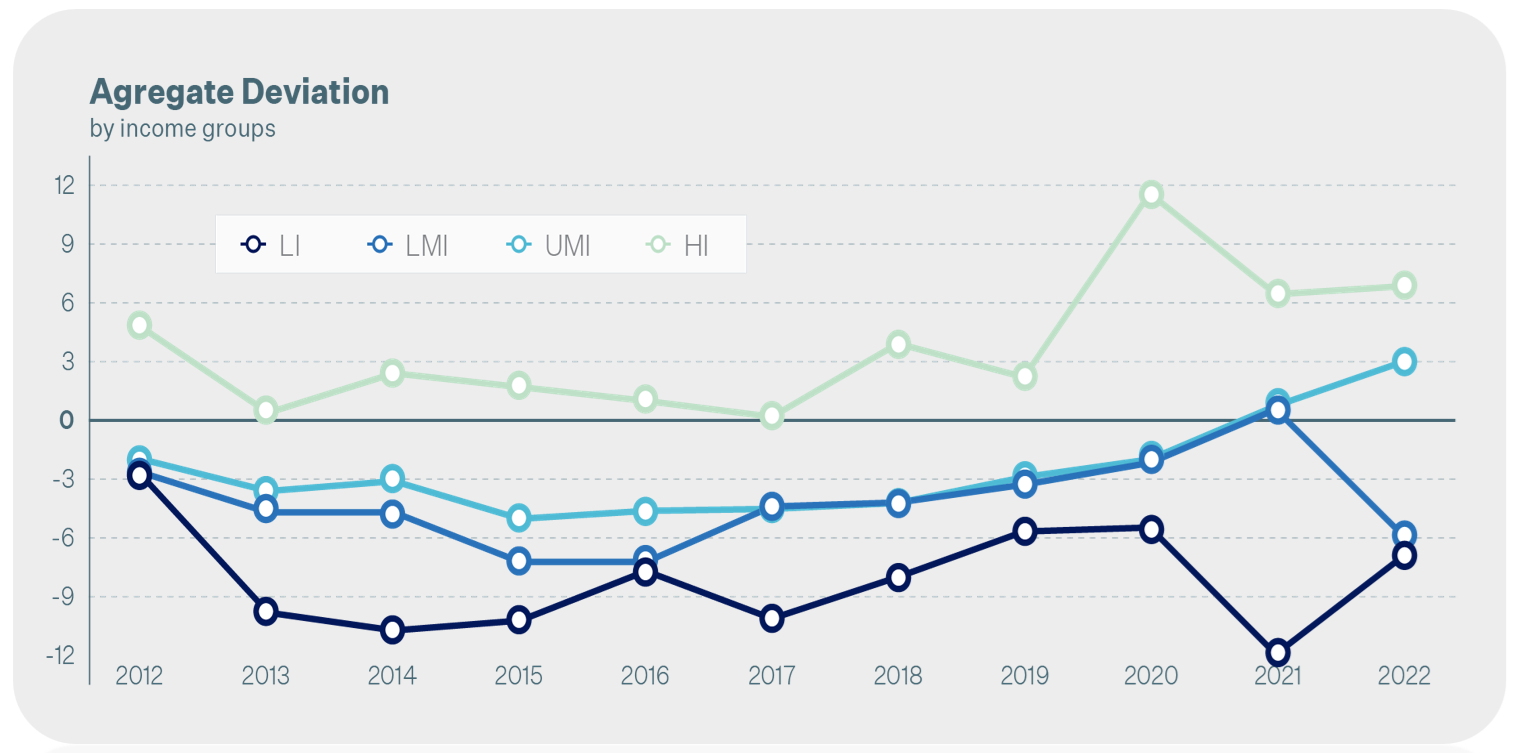

Trends across regions
Comparison of 2021-2022 (post-pandemic) and 2015-19 (pre-pandemic) reveals that budget deviations were lower in the pre-COVID period in most regions except Latin America and the Caribbean, and Sub-Saharan Africa. The graph below shows that the percentage of countries with budget deviations of less than 5% in Central Asia and Southern Asia declined from 46.2% in the pre-pandemic era to 30.8% post-pandemic. In Europe, the proportion of countries with a deviation below 5% plummeted from 69.2% prior to COVID-19 to 28.9% after 2019.
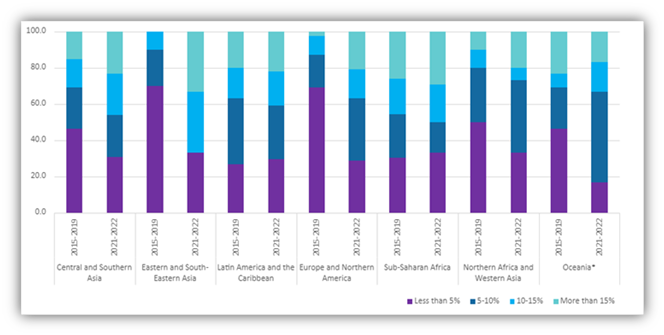
Monitoring of SDG Indicator 16.6.1

Progress in collecting data
The monitoring of SDG indicator 16.6.1 is based on the annually collected data by PEFA Secretariat in cooperation with the WBG, the PEFA Partners and other institutions . The data is reviewed and updated constantly to ensure the quality, consistency, and currency of information and submitted to UN. The progress in countries' coverage since the beginning of the project is presented on the graph below.
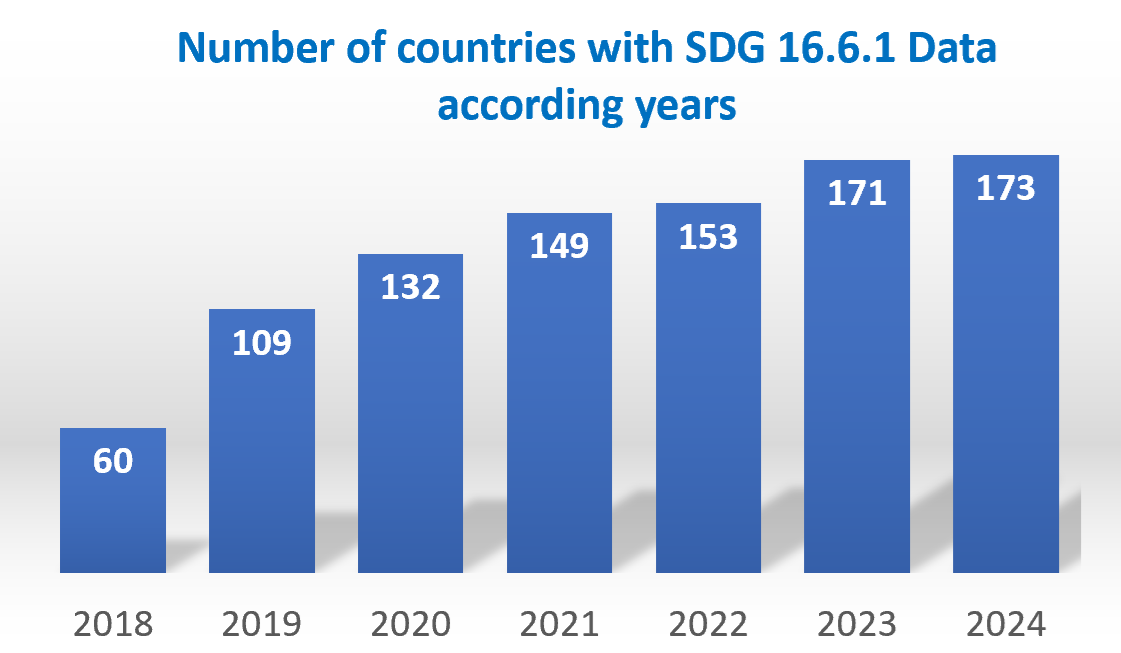

Expected results
It is considered that monitoring SDG indicator 16.6.1 will:
Show the progress of the countries’ PFM performance that will support the SDG-16;
Prove that the governmental budgets are realistic and implemented as intended;
Give a highlight of the results of the PFM systems in terms of actual revenues, expenditures and fiscal deficit by comparing them to the original plans and approved budget;
Help to monitor the progress in strengthening the PFM systems and planning reforms.

Policy implications
Information from PEFA reports and analysis of the budget credibility data indicates that:
Better budget execution performance, closer to the planned one, relates to better revenue execution;
Inclusion of all activities of central governments in budgets and financial reports leads to more predictable disbursement of resources;
Better internal controls on non-salary expenditures bring more effective management of financial data and stronger external audit systems.
INDICATOR SDG 16.6.1 DATA USAGE IN PUBLICATIONS
The information collected for SDG 16.6.1 is used widely for analysis and is published in articles, reports, case studies, and other publications. The Data was widely promoted through the following publications:
The PEFA 2022 Global Report on PFM - uses the SDG Data and provides a silent message that many PFM systems are not sufficiently resilient, which contributed to the widespread adoption of crisis budgeting measures during the pandemic.
Achieving good Budgetary Governance: Atlas of Sustainable Goals 2017
The 2018 Atlas of Sustainable Development Goals: an all-new visual guide to data and development
SDG Atlas 2020: The essential role of resilient and responsive institutions
SDG Atlas 2023 Learn more about the SDGs watching the video below, prepared by the WNG Data Department.
The information collected for SDG 16.6.1 is used widely for analysis and is published in articles, reports, case studies, and other publications. The Data was widely promoted through the following publications:
The PEFA 2022 Global Report on PFM - uses the SDG Data and provides a silent message that many PFM systems are not sufficiently resilient, which contributed to the widespread adoption of crisis budgeting measures during the pandemic.
Achieving good Budgetary Governance: Atlas of Sustainable Goals 2017
The 2018 Atlas of Sustainable Development Goals: an all-new visual guide to data and development
SDG Atlas 2020: The essential role of resilient and responsive institutions
SDG Atlas 2023 Learn more about the SDGs watching the video below, prepared by the WNG Data Department.
